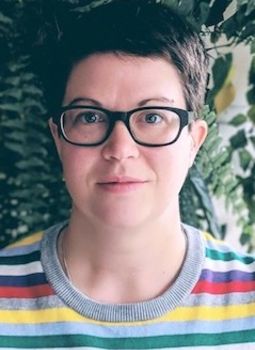
Morgan Craig
Credit: DMS
To find ways to treat COVID-19, scientists have to better understand the dynamics of SARS-CoV-2, the infection that causes the disease. Computer modelling can give a window into how the virus works in the body and help identify drugs to target it, and today researchers in the U.S. and Canada are busy developing open-source simulation models to learn more. Helping lead the interdisciplinary team (with postdoctoral fellow Adrianne Jenner) is Morgan Craig, an assistant professor in UdeM's Department of Mathematics and Statistics and researcher at the CHU Sainte Justine children's hospital research centre.
Mathematics to fight disease? How does that work?
Mathematical modelling has long been used to understand disease. In the present situation, epidemiologists are using models to learn how the virus will spread in the population and to determine effective ways to combat the pandemic. Similarly, my lab uses modelling to understand how disease develops within the body, particularly in the blood and immune systems. We can then model drug treatments and predict ideal ways to deliver drugs to people to fight given diseases. Our work is largely focused on treating cancer using immunotherapies and understanding certain rare blood disorders. We've also worked on models of new ways to deliver anti-HIV drugs. In terms of the current pandemic, our work is to translate the fundamental mechanisms involved in SARS-CoV-2 infection into a mathematical description to be able to predict the interactions between the virus, lung tissue, and the immune system using computational simulations. This will give us a better insight into infection dynamics and tells us what components are regulating the dynamics we see, what the succession of events is, and how individual characteristics impact on patient outcomes. It will also help us identify mechanisms that may be ideal drug targets, and better understand currently proposed treatment strategies.
What other institutions are involved and how do they contribute?
The SARS-CoV-2 Tissue Simulation Coalition is led by Paul Macklin at Indiana University, and includes researchers from Pepperdine University, Oklahoma State University, Argonne National Laboratory and the University of Chicago, the University of Vermont Medical Centre, the National Center for Biodefense and Infectious Disease at George Mason University, and University of Tennessee Health Science Center. The complete tissue model is constructed by assembling a variety of sub-models for distinct aspects of SARS-CoV-2 infection, such as receptor dynamics and immune response. Each sub-model is led by a team of chief scientists, who contribute their unique expertise. We collaborate as a large team to define new targets for each iteration, and in smaller groups to lead the development of our respective areas.
How important is it that the models you come up with are open-source?
Generally, and particularly for the current crisis, it is essential that research is shared quickly, efficiently and accurately. As modellers, we know it is critical that our models are calibrated and validated to experimental results to ensure their predictions are accurate. In my opinion, having this work be open-source is particularly important in two primary ways: first, the larger research community can assess our predictions in real-time, helping to rapidly refine our model; and second, it helps to avoid multiple groups working towards the same model independently, meaning we aren't doubling our efforts.
Will you be able to come up with something soon that clinicians can actually use?
We hope so! Using a rapid prototyping approach really speeds up the model building and validation stages. Since we are a multidisciplinary team working on open-source tools, we are able to quickly incorporate our collaborators' and contributors' suggestions for model improvements. In parallel to the tissue simulator project, my group is also working to understand the dynamics of systemic immune response based on our previous modelling work, together with clinical collaborators. Coming at this problem from two levels (local and systemic) will help to provide clinicians with predictions that are easily translated into their practice and/or into experimental work.
Will the models you develop be of use in future health crises?
Again, we hope so! One of the greatest strengths of the kind of mathematical modelling that we do is to provide a flexible approach to the research question we are hoping to answer. For example, the tissue simulator project is based off of Paul Macklin's work developing PhysiCell, an open-source computational platform used in cancer. Adrianne and I use PhysiCell to understand how certain immunotherapies can be used to treat different tumour types. What we learn from our SARS-CoV-2 and COVID-19 models will help to determine future avenues of experimental research and improve our understanding of the body's response to infection. By integrating a different infection, treatment or cell population, we can re-use what we are building today in response to new viruses and apply them to diseases like cancer or immune disorders that are either acute or chronic.






